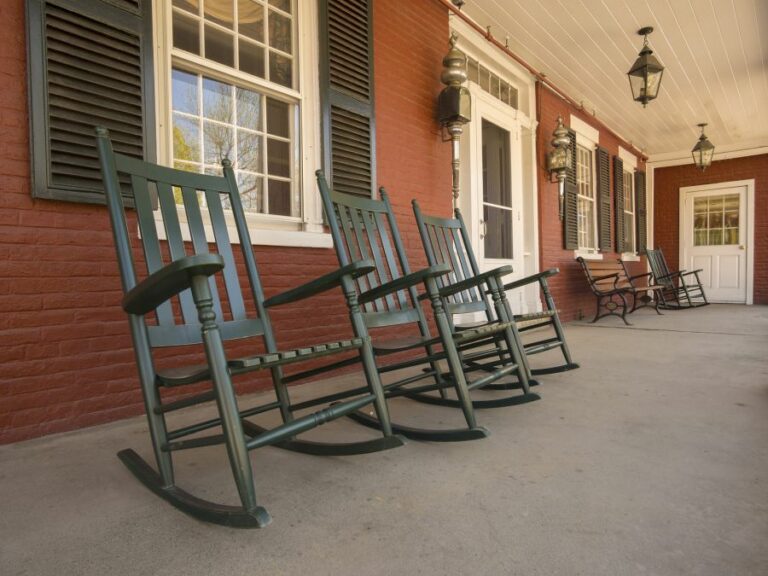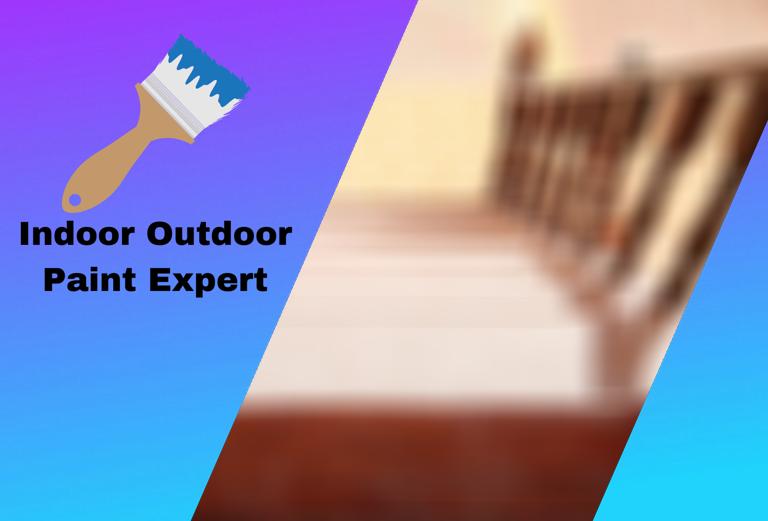Best Paint For Outdoor Wood Crafts
Looking to spruce up your outdoor living space with vibrant wood crafts? Discover the best paint options for transforming your wooden creations into eye-catching masterpieces that stand the test of time! In this highly informative post, explore the top choices of paint that ensure maximum durability and weather resistance and provide a stunning finish to your outdoor wood crafts.
Best paint for outdoor wood crafts:
Choosing the right paint for outdoor wood crafts is crucial for durability and protection. Options include acrylic, latex, and oil-based paints. Acrylics dry fast, resist water, and offer flexibility. Latex paints have low odor, resist yellowing, and dry quickly. Oil-based paints provide durability and a glossy finish but require longer drying times. Consider environmental conditions, wood type, and desired finish. Prepare the surface, use appropriate tools, and follow application instructions.

Unleash your creativity outdoors with the perfect paint! Discover the best options for longevity, durability, and vibrant colors on outdoor wood crafts. Our expert recommendations are perfect for transforming and protecting your wooden masterpieces. Keep reading to bring your art to life.
Contents
- 1 Top-Quality Paint for Outdoor Wood Craft Projects
- 2 Selecting the Appropriate Paint for Outdoor Wooden Crafts
- 3 What Type of Paint Should Be Utilized for Wooden Craft Projects?
- 4 What Type of Paint Should Be Utilized for Outdoor Decorative Elements?
Top-Quality Paint for Outdoor Wood Craft Projects
Outdoor wood crafts require special care and attention when it comes to choosing paint. The exterior finish must be able to withstand harsh environmental conditions and provide your wood crafts with long-lasting durability and protection.
• Type of Paints Ideal for Outdoor Wood Crafts
There are several types of paints suitable for outdoor wood crafts, each with its own unique features, strengths, and weaknesses. It’s essential to familiarize yourself with them and choose the most appropriate option based on your specific needs.
– Acrylic Paints
Acrylic paints are a popular choice for outdoor wood crafts due to their quick-drying properties, water resistance, and ease of application. They provide excellent adhesion and flexibility, which helps prevent the paint from cracking or peeling over time.
Acrylics come in a wide range of colors, finishes, and formulations, making them an ideal option for various outdoor wood projects. I recommend using exterior grade acrylic paints specifically designed for outdoor use, as they have added UV protection and increased durability.
– Latex Paints
Latex paints, also known as water-based paints, are another excellent option for outdoor wood crafts. They offer similar benefits to acrylic paints, such as ease of application, quick-drying properties, and water resistance, but with even lower levels of odor and VOCs (volatile organic compounds).
Latex paints also provide better resistance to yellowing, making them a suitable choice for crafts exposed to direct sunlight. When selecting a latex paint, opt for one labeled as “exterior” or “weather-resistant” to ensure it can withstand harsh outdoor conditions.
– Oil-Based Paints
Oil-based paints offer superior durability and a hard, glossy finish, making them a suitable choice for outdoor wood crafts that require a high degree of protection, such as furniture or structures exposed to harsh weather conditions.
However, oil-based paints have longer drying times and require the use of harsh chemicals for clean-up, which might not be ideal for all users. They also tend to yellow over time, which may not be desirable for certain projects.
I recommend using a high-quality primer when using oil-based paints for improved adhesion and durability.
• Factors to Consider When Choosing Paint for Outdoor Wood Crafts
– Environmental Conditions
The environmental conditions where your woodcraft will be located play a significant role in determining the best paint for the job. Consider aspects like humidity, temperature fluctuations, and sunlight exposure when selecting.
Choose paint with built-in UV protection and weather resistance for crafts exposed to direct sunlight and harsh weather conditions. For high-humidity environments, opt for mildew-resistant paints to prevent fungal growth.
– Wood Type and Condition
The type and condition of the wood you are working with can also influence your choice of paint. Some wood species, such as cedar or redwood, contain natural oils and resins that can cause paint adhesion and compatibility issues.
In such cases, using a high-quality primer before painting can help improve the paint’s performance.
Similarly, if you are working with treated or pressure-treated wood, it’s essential to ensure the paint you choose is compatible with the wood’s treatment and designed for use on treated surfaces.
– Finish and Aesthetics
When selecting paint, consider your desired finish and overall appearance for your outdoor woodcraft. Different paints and sheens can create various effects and offer different levels of durability.
For example, a high-gloss finish creates a shiny and reflective surface, offering better protection against moisture and dirt, while matte or flat finishes provide a more subtle and natural appearance. Semi-gloss and satin finishes are also available options, offering a balance between the two extremes.
Choose a finish that suits your desired aesthetic and offers the required level of protection.
• Additional Tips
- Proper surface preparation is essential for achieving a durable and long-lasting finish. Clean the wood surface thoroughly before painting, and make sure it is dry and free of dust, dirt, and debris.
- Apply a high-quality primer before painting to improve paint adhesion, especially if using oil-based paints or working with wood species containing natural oils and resins.
- Selecting the right tools for your painting project, such as brushes or rollers, can also impact the final result. Choose quality tools that are appropriate for your paint type and desired finish.
- Follow the paint manufacturer’s recommendations for application techniques and drying times to ensure optimal performance and durability of your paint finish.
• In Conclusion
Choosing the best paint for outdoor wood crafts involves considering factors like environmental conditions, wood type, and desired finish. Acrylic, latex, and oil-based paints are all suitable options, each offering its unique benefits and drawbacks.
By carefully evaluating your specific needs and preferences and following proper surface preparation and application techniques, you can achieve a durable and long-lasting finish that will protect and beautify your outdoor wood crafts for years to come.
Selecting the Appropriate Paint for Outdoor Wooden Crafts
Painting wooden crafts for outdoor use can be fun and challenging. As an experienced artist and DIY enthusiast, I understand the need to choose the right paint for the project at hand.
• Choosing the Right Paint for Outdoor Wood Crafts
There are several paints to choose from that are suitable for outdoor wood crafts, and I recommend considering the following types:
– Acrylic Paints
Acrylic paint is an excellent choice for outdoor wood crafts because it is versatile and easy to work with. It is water-soluble, dries quickly, and provides long-lasting, vibrant colors. Opt for high-quality, outdoor-rated acrylic paint for better durability and weather resistance.
– Exterior Latex Paints
Exterior latex paint is specifically designed for outdoor use, making it an excellent choice for wood crafts. It is more durable than acrylic paint and provides better resistance to weathering and fading.
However, latex paint tends to take longer to dry than acrylic paint, so keep that in mind when planning your project.
– Oil-based Paints
While oil-based paints are not as commonly used for outdoor wood crafts, they still offer several advantages. Oil paints adhere well to wood surfaces, providing a smooth finish and excellent durability.
These paints are also resistant to moisture, making them a good option for outdoor projects. Remember that oil-based paints can be more challenging to work with, as they typically require longer drying times and solvents for thinning and cleanup.
• Preparing the Wood Surface for Painting
Before you start painting, it is essential to prepare the wooden surface of your outdoor crafts properly. Taking the time to follow these steps will ensure your paint adheres well and contributes to the longevity of your project:
– Clean the Surface
Even new wood can have dirt, grease, or other contaminants on its surface. Use a mild soap solution and a soft brush to gently scrub the wood, removing any debris before rinsing it clean with water. Allow the wood to dry completely before moving on to the next step.
– Sand the Surface
Smooth the surface of your wood craft by sanding it with medium-grit sandpaper, followed by a finer grit to achieve a consistent finish. Sanding removes imperfections in the wood and helps create a better bond for the paint when applied.
After sanding, be sure to remove all dust by wiping the surface with a damp cloth or using a vacuum with a brush attachment.
– Apply Primer
When working with outdoor wood crafts, applying a quality primer to the surface is important before painting. Using a primer provides a better bond for the paint, which helps prevent peeling and contributes to the durability of your project.
Choose a primer that is compatible with your type of paint, and follow the manufacturer’s recommendations for application.
• Painting Your Outdoor Wood Crafts
With the surface of your wood craft prepared and primed, you are now ready to apply the paint. Here are some helpful tips to ensure a smooth, even finish:
- Choose your paintbrush carefully, considering factors like the type of paint you are using and the size or shape of the brush based on the project you are painting.
- If using acrylic paints, consider adding an acrylic medium or sealant to help improve the paint’s durability and resistance to outdoor elements.
- Apply the paint in thin, even coats, allowing each layer to dry according to the manufacturer’s instructions before applying the following coat.
- Finally, seal your project with a clear, outdoor-rated varnish or sealant to give your paint job the best possible protection against UV rays, moisture, and other outdoor elements.
• Maintaining Your Outdoor Wood Crafts
Even with the right paint and proper application, outdoor wood crafts require routine maintenance to keep them looking beautiful. Here are some quick tips for maintaining your painted wood crafts outside:
- Regularly dust or clean off any dirt, debris, or bird droppings, as these can damage the paint over time.
- Inspect your wood crafts for areas where the paint may be chipping, cracked, or worn away. Promptly touch up these spots to keep your project looking its best and protect the underlying wood.
- Reapply the clear outdoor varnish or sealant every couple of years (or as needed) to ensure ongoing protection against the elements.
By choosing the right paint, properly preparing and painting your wooden surface, and performing regular maintenance, your outdoor wood crafts will continue to look beautiful and withstand the test of time.
So, head outside and confidently express your creativity, knowing that your painted wood crafts will endure the elements and stay vibrant all year.
What Type of Paint Should Be Utilized for Wooden Craft Projects?
Wood is a versatile material that can be transformed into beautiful art pieces and functional items. Whether you are a professional woodworker or a hobbyist, investing in the right kind of paint is crucial to achieving the desired look for your wood crafts.
• Acrylic Paints: Beginner-Friendly and Versatile
Acrylic paint is perhaps the most popular choice of paint for wood crafts. It is easy to work with, beginner-friendly, and available in a wide range of colors. Acrylic paints are water-based, dry quickly, and offer excellent coverage.
They can easily be thinned with water to achieve the desired consistency, allowing for a range of painting techniques, such as glazing or stippling.
Pros of using acrylic paints:
- Quick drying time
- Easy to clean with water
- Available in a wide range of colors
- Budget-friendly
Cons of using acrylic paints:
- May require multiple coats for full coverage
- Not as durable as oil-based paints
– Recommendation:
For most wood craft projects, I highly recommend using acrylic paints. Beginners can ease into the world of painting with acrylics, while professionals will appreciate the versatility it offers.
Sealing your acrylic-painted wood crafts with a clear varnish or sealant is always a good idea to increase durability and protect the paint from chipping or peeling.
• Oil-Based Paints: Durable and Vibrant
Oil-based paints are known for their durability and rich, vibrant colors. They have a slower drying time than acrylic paints, allowing for better blending and control over the painting process.
While oil-based paints are typically more expensive than acrylic paints, they provide excellent coverage and are more resistant to wear and tear.
Pros of using oil-based paints:
- Durable and long-lasting
- Rich, vibrant colors
- Excellent coverage
- Can be thinned and blended easily
Cons of using oil-based paints:
- Slower drying time
- More challenging to clean (requires paint thinner)
- Generally more expensive than acrylic paints
– Recommendation:
Oil-based paints are suitable for wood craft projects that require a higher level of durability or where vibrant colors are essential. However, given their slower drying time and more challenging cleanup process, they may not be a practical choice for beginners or those working on a tight schedule.
• Chalk Finish Paint: Effortless Vintage Look
Chalk finish paint has gained popularity in recent years due to its distinctive, chalky appearance and ease of application. It is especially suitable for creating a distressed or vintage look on wood furniture and decorative items.
Chalk finish paint is water-based and dries to a matte finish, requiring no prep work or sanding.
Pros of using chalk finish paint:
- Creates an effortless vintage look
- No prep work or sanding required
- Can be used on a variety of surfaces
- Easy to distress for an aged look
Cons of using chalk finish paint:
- Limited color options
- Can be more expensive than acrylic or oil-based paints
– Recommendation:
If you’re looking to create a vintage or distressed look on your wood crafts, chalk finish paint is the way to go. It’s an easy-to-use option for both beginners and professionals alike.
However, remember that the color palette for chalk finish paints is usually more limited than acrylic or oil-based paints and may not be suitable for projects requiring vibrant, bold colors.
• Milk Paint: Eco-Friendly and Historical
Milk paint is an eco-friendly option made from natural ingredients, such as milk protein, lime, and earth pigments. It has been used for centuries to paint furniture, interiors, and exteriors. Milk paint provides an authentic, historical look with its rustic, matte finish, and subtle texture.
Pros of using milk paint:
- Eco-friendly and non-toxic
- Unique, rustic finish
- Can be mixed to create custom colors
- Durable and long-lasting
Cons of using milk paint:
- Can be challenging to mix and prepare
- May be more expensive than other paint options
– Recommendation:
Milk paint is an excellent choice for those who prioritize eco-friendliness and historical authenticity. Mixing and preparing correctly may require some practice, but once mastered, it can produce stunning, unique results on wood crafts.
• Tips and Tricks for Painting Wood Crafts
Here are a few tips to ensure a smooth painting process and high-quality results:
- Preparation is key: Before painting, make sure your wood surface is clean, dry, and smooth. Sand any rough areas and remove any dust or debris.
- Prime your surface: To ensure proper paint adhesion, apply a suitable primer to your wood surface, especially when working with oil-based paints or when painting over darker colors.
- Choose the right brush: Investing in a high-quality brush will make a world of difference in your painting experience. Use natural-bristle brushes for oil-based paints and synthetic-bristle brushes for water-based paints.
- Apply multiple thin coats: To achieve a smooth, even finish, apply multiple thin coats of paint instead of one thick coat. Allow each coat to dry thoroughly before applying the next.
- Seal and protect: Seal your painted wood crafts with a clear varnish or sealant for added durability and protection.
In conclusion, the type of paint you choose for your wood crafts will depend on the specific project, your skill level, and your desired outcomes. Acrylic paints offer versatility and ease of use, while oil-based paints provide durability and vibrant colors.
Chalk finish and milk paint are ideal for achieving unique, vintage looks. No matter the paint type you choose, proper preparation, application, and sealing will ensure that your wood crafts look stunning and last for years to come.
Type of Paint | Description |
|---|---|
Acrylic Paint | Water-based paint that dries quickly, is easy to clean up, and is available in a wide range of colors. |
Oil Paint | Water-based paint that dries quickly, is easy to clean up and is available in a wide range of colors. |
Enamel Paint | Hard and glossy paint that dries to a smooth and durable finish, suitable for both indoor and outdoor use. |
Chalk Paint | Matte finish paint that gives a vintage, distressed look to wood crafts. Requires sealing with wax or a topcoat. |
Latex Paint | Water-based paint, suitable for larger projects with good adhesion and durability. Requires primer when used on untreated wood. |
What Type of Paint Should Be Utilized for Outdoor Decorative Elements?
Selecting the ideal paint for your outdoor decorations is crucial to provide long-lasting protection and enhance durability.
• Types of Paints for Outdoor Decorations
– Acrylic Paints
Acrylic paints are popular for outdoor decorations due to their versatility, durability, and fade-resistant properties. They are water-based, fast-drying, and provide excellent coverage. Additionally, they can adhere to various surfaces such as wood, metal, fabric, and plastic.
Pros of Acrylic Paints:
- Versatile and suitable for different types of materials.
- Provides a smooth and colorful finish.
- Water-based and easy to clean up with soap and water.
- Fast-drying and weather-resistant.
Cons of Acrylic Paints:
- May require a primer or a sealer, depending on the surface.
- Not ideal for glossy surfaces as they may not adhere well.
– Latex Paints
Another common option for outdoor decorations is latex paint, also known as water-based paint. They are easy to work with, non-toxic, environmentally friendly, and provide excellent coverage. Latex paints are ideal for large projects and can be used on many surfaces, including wood, metal, and masonry.
Pros of Latex Paints:
- Easy to apply, especially with a brush, roller, or spray.
- Quick-drying and low odor.
- Easy to clean up with water and soap.
- Resistant to chipping and peeling.
Cons of Latex Paints:
- Can produce a somewhat glossy finish, not suitable for matte projects.
- May require multiple coats for full coverage.
– Oil-Based Paints
Oil-based paints have been commonly used for exterior projects due to their durability and long-lasting finish. They can be applied on various surfaces, such as metal, wood, and masonry. Oil-based paints usually provide a glossy, smooth appearance that is resistant to wear and tear.
Pros of Oil-Based Paints:
- Provides a durable and long-lasting finish.
- Resistant to weathering and chipping.
- Suitable for high-traffic areas and heavy-use items.
Cons of Oil-Based Paints:
- Takes a long time to dry.
- Strong odor and requires the use of mineral spirits or turpentine for cleanup.
- May turn yellow over time.
• Surface Preparation and Application Tips
– Surface Preparation
Proper surface preparation is key to ensuring a long-lasting and durable finish. Before applying paint, follow these steps:
- Clean the surface thoroughly to remove dirt, dust, or debris.
- Sand the surface lightly to remove any loose paint, rust or old finish.
- Use a primer if necessary, especially when dealing with porous surfaces or surfaces with existing coatings.
- Ensure the surface is completely dry before applying paint.
– Application Tips
- Choose the appropriate tools for applying the paint, such as brushes, rollers, or sprays.
- Apply thin, even layers of paint, allowing each coat to dry completely.
- Use the correct painting technique based on the type of paint and surface being painted.
- If necessary, apply a clear protective topcoat or sealer to provide extra protection against weather or UV rays.
• Choosing the Right Finish
Paint finishes can greatly affect the overall appearance of your outdoor decorations. Some common paint finishes include matte, satin, semi-gloss, and gloss. When selecting a finish, consider:
- The desired appearance or aesthetic of the decoration.
- The amount of wear and tear the item will be exposed to.
- The specific material and texture of the decoration.
• Conclusion
Selecting the appropriate paint for outdoor decorations is crucial to achieving a beautiful, durable, long-lasting finish. Based on your project’s specific needs and materials, choose from acrylic, latex or oil-based paints.
Consider surface preparation, proper application techniques, and the desired finish to create a stunning outdoor display that will withstand the test of time.
Type of Paint | Description | Best For |
|---|---|---|
Acrylic Latex | Water-based, easy to clean, and durable, acrylic latex is suitable for outdoor decorations. It dries quickly and resists against weather and UV rays. | Wood, metal, and stone surfaces |
Oil-Based Paint | Oil-based paint provides a durable, long-lasting finish that can withstand the elements. It takes longer to dry but provides excellent coverage and is extremely versatile. | Wood, metal, and concrete surfaces |
Spray Paint | Spray paint is perfect for small and intricate outdoor decorations. It dries quickly and comes in various finishes such as gloss, matte, and textured. | Metal, plastic, and wicker surfaces |
Exterior Wood Stain | Wood stain adds color to the wood while still allowing its natural grain to show through. It is weather resistant and available in various shades and opacities. | Wooden outdoor decorations |







